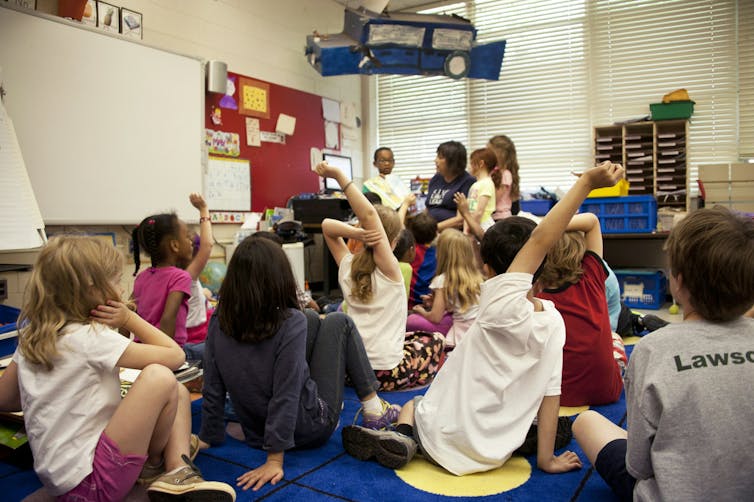Source: The Conversation – Canada – By Shiva S. Mohan, Research Fellow, Canada Excellence Research Chair in Migration & Integration program, Toronto Metropolitan University
Canada’s federal government recently introduced the Strong Borders Act, also known as Bill C-2, that proposes Canada tighten migration controls and modernize border enforcement between Canada and the United States.
Critics have warned the bill “could pave the way for mass deportations” as well as increase precarity for legal migrants.
Read more:
Why Canada’s Strong Borders Act is as troublesome as Donald Trump’s travel bans
Even now, under existing laws, a migrant could be “legal” and still be denied health care, lose their job or effectively be unable to leave Canada for fear of being denied re-entry.
Bill C-2’s expanded enforcement powers and increased risk of status revocation could make these precarities much worse.
This is already the quiet reality for thousands of migrants in Canada under their “maintained status”, formerly “implied status.” This status is a legal provision designed to protect continuity for temporary residents who apply to extend their permits.
Maintained status itself is not the problem. On paper, it offers legal protection.
But in practice, it often collapses because of the ecosystem in which it operates: fragmented institutions, absent co-ordination and lack of transparency.
Maintained status has been narrowed
In May 2025, Immigration, Refugees and Citizenship Canada (IRCC) quietly narrowed the scope of maintained status.
Under the new rules, if a person’s first application is refused while they are on maintained status, any second application submitted during that period is now automatically refused.
This effectively strips applicants of legal status, including protections under maintained status, to remain in Canada. The change shows how even compliant migrants can lose status abruptly, further heightening the insecurity built into the system.
This is a clear expression of complex precarity: a condition in which migrants face legal, economic and social insecurity, even when they follow all the rules.
Maintained status is just one example of this larger phenomenon of Canadian policy generating hidden forms of exclusion.
Legal, but not recognized?
Migrants on maintained status are legally allowed to stay in Canada and continue working or studying under the same conditions as their expired permit. Yet no new permit is issued to confirm this status.
Proof of this legal standing varies depending on how a person applies. Those who apply online may receive a WP-EXT letter confirming their right to continue working. However, this isn’t issued to post-graduation work-permit holders, and expires after 365 days.
Paper-based applicants are advised that no such letter will be provided. Instead, they must rely on a copy of their application, a fee payment receipt or courier tracking information to demonstrate continued legal status.
If no letter is available, or once it expires, IRCC advises applicants to direct employers to the Help Centre web page as proof of their right to remain and work.
These workarounds are legally valid but fall short of what many employers, landlords and service providers consider adequate proof of status.
Read more:
Canada’s new immigration policy favours construction workers but leaves the rest behind
The limits of informal proof
My current ongoing research points to how employers following rigid HR protocols often reject informal documentation. Some migrants even obtain letters from immigration lawyers to explain their legal right to remain and work.
IRCC does not publish public data on the number of people on maintained status or how long they remain in that condition. Some front-line organizations have adjusted their services in response to this gap.
MOSAIC, for example, a major settlement agency in British Columbia, explicitly lists “migrant workers on maintained status” as eligible for support. This signals institutional recognition of the category.
The broader situation, however, reflects a disconnect between legal recognition by the state and practical verifiability in everyday life.
The risk of travel
Travel while on maintained status is legally permitted only under narrow conditions, such as holding a valid Temporary Resident Visa, being visa-exempt or returning from the U.S. under specific circumstances.
But even in these cases, leaving Canada terminates maintained status.
Migrants may be allowed to re-enter as visitors, but they cannot resume work or study until a new permit is issued. This introduces major uncertainties for people who may need to travel for family, emergencies or professional obligations.
Disparities in provincial health access
Access to public health insurance during maintained status varies widely across provinces.
In Ontario, OHIP (Ontario Health Insurance Plan) cards are directly tied to the expiration of work permits. Unless migrants know to proactively request extended coverage and can meet specific document requirements, they risk losing health insurance entirely. Even when eligible, coverage is not automatic and may require out-of-pocket payment pending reimbursement.
In Québec, RAMQ (Régie de l’assurance maladie du Québec) treats migrants on maintained status like new arrivals. They must reregister for coverage and face a three-month waiting period from the time of renewal, regardless of continuous legal presence.
In British Columbia, by contrast, the MSP (Medical Services Plan) offers temporary coverage for up to six months (extendable) to individuals on maintained status, provided they previously held MSP and submit IRCC receipt proof.
This more inclusive approach highlights how uneven provincial co-ordination amplifies the precarity of federal policy.
Infrastructure is needed immediately
Migrants face great risks on maintained status.
Despite investments in automation and digital infrastructure, IRCC continues to experience chronic processing delays, leaving migrants in prolonged uncertainty: legally present, but practically unrecognized.
To address this, Canada needs systems and resources designed to uphold legal recognition in daily life. It needs to:
-
Create a secure centralized portal that allows migrants to control who can verify their legal status in real time. The U.K.’s share code platform and the American myE‑Verify system provide clear examples of how this can work, reducing confusion for employers, landlords, and service providers.
-
Issue co-ordinated provincial guidance, particularly regarding access to essential services such as health care, so that front-line staff have clarity on migrants’ rights under maintained status.
-
Protect continuity of status after international travel, ensuring that those who leave Canada while on maintained status do not lose the ability to return and resume work or study.
As Canada advances legislation like Bill C‑2, we must not ignore the country’s quiet erosion of its existing legal architecture for migrants.
Migrants on maintained status have followed the rules.
If we are serious about building trust in immigration systems, we must commit to infrastructure that is workable, visible and fair.
![]()
Shiva S. Mohan receives funding from the Canada Excellence Research Chair in Migration and Integration Program at Toronto Metropolitan University. He has no other affiliations or financial interests that would benefit from this article.
– ref. Canada’s proposed Strong Borders Act further threatens the legal rights of migrants – https://theconversation.com/canadas-proposed-strong-borders-act-further-threatens-the-legal-rights-of-migrants-259349







